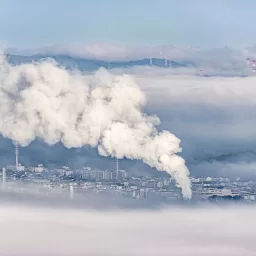In industrial environments, it is often necessary to run temporary utility lines, whether they are electrical and communication cables, water hoses, or process hoses containing oil or chemicals. This whitepaper reviews traditional methods of protecting these lines from vehicle traffic. Limitations of each approach are discussed.
Traditionally, protection of utility lines from vehicle traffic has been rather primitive. On concrete slabs, two scaffold boards would be run side by side, the lines laid between them, and a third scaffold board nailed on top to produce a crossing ramp. In soil, trenches have often been dug and the lines buried. In either case, power or communication lines may also be strung overhead.
Using scaffold boards to protect lines, which has been the prevalent practice in sites such as chemical plants, is fraught with problems. First, they are expensive to build. The boards are heavy, so it takes two men and sometimes a supervisor, depending on work rules. The scaffold boards are nailed together, but once in service, the boards splinter and the nails back out, causing flat tires on the crossing vehicles. Boards have to be replaced, and sometimes the very utility lines that the boards are designed to replace become damaged. At the end of the job, the crossing has to be dismantled, and the boards thrown away… they are no longer suitable for scaffolding. A major refinery estimated the cost of building, maintaining, and deconstructing a typical scaffold board crossing at more than $1500 for a typical 90-day maintenance “turnaround”, not counting the cost and aggravation of flat tires. And at least one incident occurred where a nail was driven into a high voltage line by a heavy track vehicle, causing an emergency shutdown of the process unit and creating an imminent hazard for the track vehicle operator.
In work sites such as oil rigs, trenching has been a dominant method of protecting lines. Many oil and gas wells today lay a soil cement barrier to prevent any spilled material from absorbing into the earth and contaminating the site. To trench, however, a crew is called in and intentionally breaches that barrier. A trench is dug, PVC pipe is run, and the utility lines threaded through the pipe. At the end of the job (often only 45 days or so on gas wells before it moves to the next site), the lines have to be dug up and retrieved.
Stringing lines overhead is sometimes done, but is also costly and presents a limit to the height of traffic that can pass underneath.
As an innovative alternative, many industrial sites have decided to use products that are explicitly built to temporarily protect hoses and cables. These “temporary road crossings” are built out of steel to endure the rugged environment present in chemical plants, refineries, shipyards, and oil rigs. They only require one man and a forklift to install, are modular in design, and are available for rental or sale. Rental “boards” provide the advantage of being low cost, only being on site when they are needed, and are funded out of an operating budget. Most users find the cost of using these steel “boards” or “ramps” is 40% lower than using scaffold boards, and 10% lower than trenching.
Whatever course you choose to protect your hoses and cables, first consider the safety that the protection offers, as well as the impact on the environment. Then, be sure to consider the total cost to construct, maintain, and deconstruct the protection – including costs of damage to the lines being protected or the vehicles that are involved. You may conclude, as many others have, that using a “for purpose” steel road crossing provides the lowest cost along with the most peace of mind.
BY by GAHZLY
El Sewedy wire prices 2022
#Issues #Temporary #Hose #Cable #Protection


